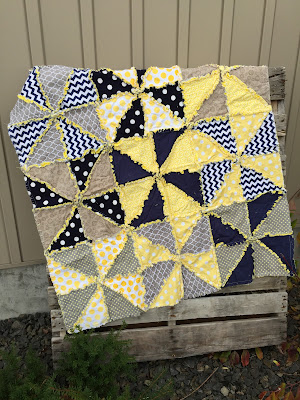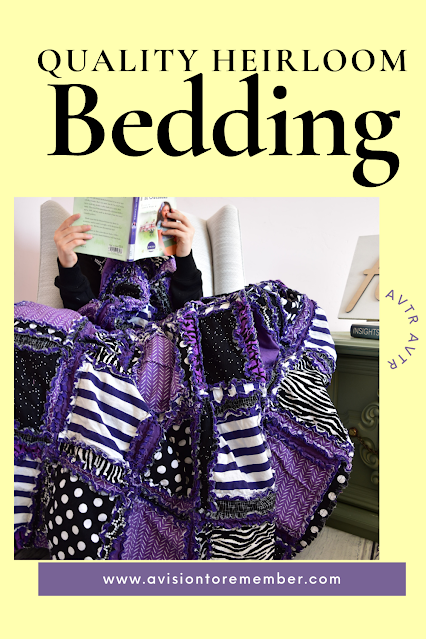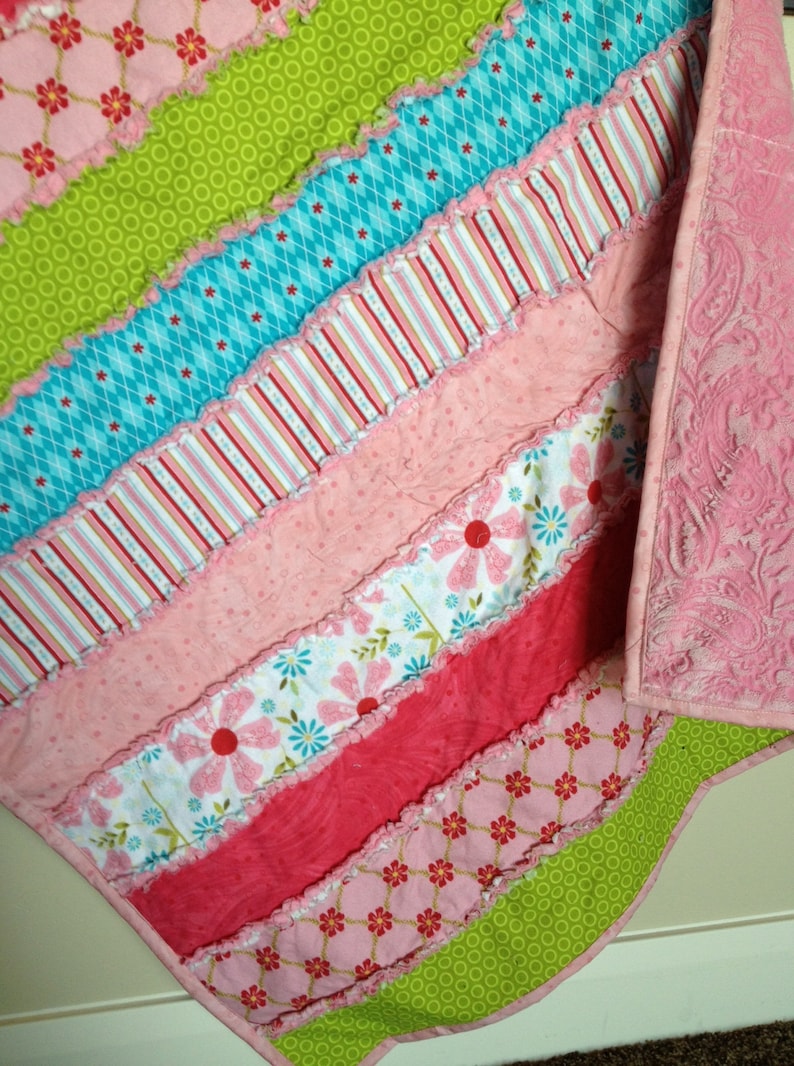Few things compare to the comfort and warmth of a well-made rag quilt. Rag quilts, characterized by their exposed seams and frayed edges, offer both style and coziness. Whether you're a seasoned quilter or just starting your journey, making a rag quilt is a satisfying and approachable project. In this comprehensive guide, we'll walk you through the step-by-step process of creating your very own rag quilt. From selecting fabrics to sewing the perfect seams, you'll soon have a beautiful and snuggly quilt to call your own.
Materials Needed
Before we dive into the actual crafting process, let's gather the materials and tools you'll need for this project:
Fabric: The heart of any quilt is the fabric. For a rag quilt, you'll typically need two types: one for the quilt top (also called the "face") and one for the backing. Flannel, cotton, and fleece are popular choices for their softness and warmth.
Batting (or flannel for batting): This layer goes between the top and backing fabrics to provide extra warmth and thickness to your quilt.
Ruler and Rotary Cutter: These tools are crucial for precise fabric cutting.
Scissors: For snipping seams and creating the signature ragged edges.
Sewing Machine: While you can sew a rag quilt by hand, using a sewing machine will save you time and effort.
Thread: Match the thread color to your fabric for a polished look
Seam Ripper: Just in case you need to undo any stitches.
With your materials at the ready, let's embark on our rag quilt-making journey.
Step 1: Choosing Your Fabrics
The first step in creating a stunning rag quilt is selecting the perfect fabrics. Consider the following tips:
Colors and Patterns: Choose fabrics that match your style and the quilt's intended purpose. Solids, plaids, or themed prints are all wonderful options.
Texture: Opt for fabrics with a pleasing texture, as this will enhance the tactile appeal of your quilt. Soft, cozy materials like flannel or fleece work wonderfully.
Pre-Washing: It's a good idea to pre-wash your fabrics to prevent color bleeding or shrinkage after your quilt is complete.
Contrast: Ensure there's enough contrast between the fabrics for your quilt pattern to shine through. High contrast can create a striking, eye-catching design.
Step 2: Cutting Your Fabric
Now that you've selected your fabrics, it's time to start cutting. Follow these steps for precision:
Use your ruler and rotary cutter to cut identical squares or rectangles from your face and backing fabrics. These will be the same size since rag quilts are typically symmetrical.
Cut an additional layer of batting that's slightly smaller than your fabric pieces. This allows for a ragged edge to form around the quilt's perimeter.
To create the classic "frayed" look of a rag quilt, make small snips along the edges of your fabric squares, about 1/4 to 1/2 inch apart, being careful not to cut too close to the seam line.
Assemble your squares into pairs, with a face fabric square and a backing fabric square, and place a batting square in between.
Step 3: Sewing the Quilt Blocks
Now, it's time to start sewing your quilt blocks together:
Align the edges of your quilt block layers, making sure the batting is sandwiched in between the face and backing fabrics.
Use your sewing machine to stitch along the edges, creating a seam allowance of about 1/2 inch. You can choose a straight stitch or a decorative stitch, depending on your preference.
Continue sewing your quilt blocks together, creating rows and columns until you have the desired quilt size. Be sure to backstitch at the beginning and end of each seam for added durability.
Press your seams flat with an iron, ensuring that they lie in the same direction to reduce bulk.
Step 4: Assembling the Quilt
With all your quilt blocks sewn together, it's time to assemble the entire quilt:
Lay out your quilt blocks in the desired pattern, arranging them into rows and columns. Ensure the seams from adjacent blocks nestle together neatly.
Pin the rows and columns together using quilting pins to keep everything aligned.
Stitch the rows together, and then stitch the columns together, using a 1/2-inch seam allowance.
Once your quilt top is complete, trim any excess batting that extends beyond the fabric edges.
Step 5: Clipping and Fraying
Now, let's create those charming frayed edges:
Use scissors to make small, close snips along the seam allowances, being careful not to cut through the actual seam.
The more snips you make, the fluffier and frayed your quilt will appear. You can adjust the density of snips to achieve your desired look.
Step 6: Washing and Drying
Give your rag quilt its signature look by washing and drying it:
Place your quilt in the washing machine, along with a few towels or sheets to help create friction.
Use cold water and a gentle detergent to prevent excessive fading.
After washing, tumble dry your quilt on low heat. The agitation and heat will encourage the fraying process.
Periodically check on your quilt during drying to ensure it doesn't become overly tangled.
Step 7: Enjoy Your Rag Quilt
Congratulations! You've successfully created a beautiful rag quilt that's not only visually appealing but also wonderfully warm and cozy.
Whether you're keeping it for yourself or gifting it to a loved one, your rag quilt is a labor of love that will provide comfort and style for years to come. Curl up with a good book or wrap it around yourself on a chilly evening—it's the perfect companion for relaxation and warmth.
Now that you've mastered the art of making rag quilts, you can explore different patterns, colors, and sizes to create a collection of these charming and timeless pieces. Enjoy your quilting journey and happy crafting!

.png)







.png)




.png)


.png)
.jpg)










.JPG)


.JPG)







.png)
.png)
.png)
.png)





